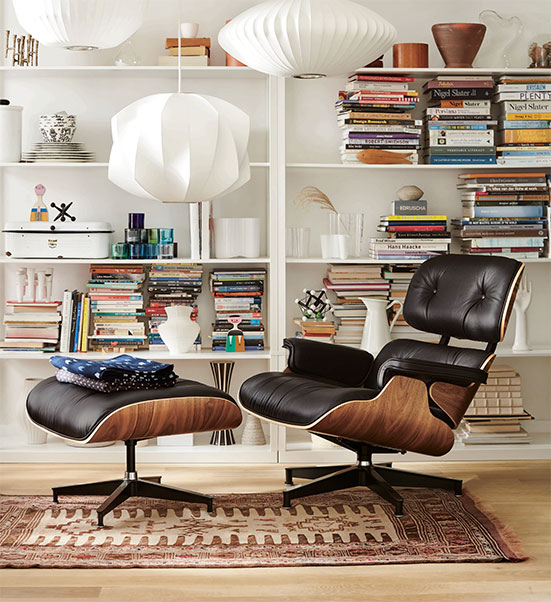Modern furniture design has become synonymous with sleek lines, minimalism, and functionality. It is a style that has captured the hearts of homeowners, interior designers, and furniture enthusiasts alike. In this blog post, we will delve into the key elements of modern furniture design, tracing its roots and exploring its evolution. Whether you’re looking to furnish your home or simply appreciate the artistry behind modern furniture, this guide will provide you with valuable insights into the materials, shapes, colors, and textures that define this timeless design style.
Overview of Modern Furniture Design
Modern furniture design is characterized by its emphasis on simplicity, clean lines, and functional aspects. Unlike traditional or ornate furniture styles, modern furniture embraces minimalism and aims to eliminate unnecessary embellishments. Its distinguishing features include a focus on form, function, and materials that reflect the contemporary spirit. While modern furniture design has its roots in the early 20th century, it continues to evolve and adapt to the needs and preferences of today’s society.
The history of modern furniture design can be traced back to the Bauhaus movement in the early 20th century, which emphasized the fusion of art, craft, and technology. Influential designers such as Ludwig Mies van der Rohe, Marcel Breuer, and Charles and Ray Eames played pivotal roles in shaping the modern furniture movement and leaving a lasting impact on design principles that are still revered today.
Materials Used in Modern Furniture
One of the defining aspects of modern furniture design is the use of innovative materials. Common materials include wood, metal, glass, and plastic. Wood, such as teak or walnut, is often used for its warm and organic aesthetic, while metal, such as stainless steel or aluminum, provides a sleek and industrial look. Glass adds an element of transparency and lightness, while plastic offers versatility and affordability.
Each material has its advantages and disadvantages in modern furniture design. Wood, for example, provides durability and a timeless appeal, but it may require more maintenance. Metal offers strength and a contemporary look, but it can be prone to scratches. Glass contributes to an airy and modern ambiance, but it may require more careful handling. Plastic is lightweight and easily molded, but it may lack the durability of other materials.
Shapes and Forms in Modern Furniture
Clean lines, simple shapes, and geometric forms are at the core of modern furniture design. Curves and ornate details are minimized, while the focus is placed on creating functional and visually appealing pieces. Iconic modern furniture designs, such as the Barcelona Chair by Mies van der Rohe or the Eames Lounge Chair, exemplify these design principles.
The simplicity of modern furniture shapes allows for versatility and easy integration into different interior styles. Whether you prefer a mid-century modern aesthetic or a contemporary minimalistic look, the clean lines and geometric forms of modern furniture can harmonize with various design schemes.
How to Incorporate Modern Furniture Design into Your Home
Bringing modern furniture into your home can transform the overall aesthetic and create a contemporary atmosphere. Here are some tips for incorporating modern furniture into different rooms:
- Start with a focal point: Choose a standout modern furniture piece as the focal point of the room. It could be a sleek sectional sofa, an iconic lounge chair, or a minimalist dining table. Build the rest of the room’s design around this centerpiece.
- Embrace open space: Modern furniture design often prioritizes open and airy spaces. Avoid clutter and allow furniture to have room to breathe. Leave ample space between pieces to create a sense of flow and promote a minimalist environment.
- Mix and match: Don’t be afraid to mix modern furniture with other design styles. Combining modern pieces with vintage or traditional elements can create an eclectic and personalized look. The key is to maintain a cohesive balance between the different styles.
- Play with textures and materials: Experiment with different textures and materials to add depth and visual interest. Consider combining a smooth leather sofa with a textured fabric armchair or juxtaposing a glass coffee table with a wooden side table. This interplay of textures can elevate the overall design.
- Balance simplicity with comfort: While modern furniture tends to embrace minimalism, it is essential to prioritize comfort as well. Look for furniture that offers both aesthetic appeal and functionality. Consider upholstered pieces with clean lines and ergonomic designs to ensure a comfortable living experience.
- Light it up: Lighting plays a crucial role in modern furniture design. Opt for sleek and minimalist light fixtures that complement the overall aesthetic. Incorporate both ambient and task lighting to create a well-balanced and functional space.
Conclusion
Modern furniture design has a timeless appeal that continues to captivate design enthusiasts around the world. By understanding the key elements of modern furniture design—such as materials, shapes, colors, and textures—you can successfully incorporate this style into your own home. Remember to embrace simplicity, prioritize functionality, and experiment with different combinations to create a space that reflects your personal taste.
Whether you’re drawn to the clean lines of mid-century modern furniture or the sleek minimalism of contemporary designs, modern furniture offers a wealth of possibilities for transforming your living spaces. By incorporating these key elements and principles into your design choices, you can create a home that exudes modernity, comfort, and style.
So, why not embark on a journey of modern furniture design and bring a touch of contemporary elegance into your living spaces? Explore the endless possibilities and let your creativity shine as you curate a home that is a true reflection of your unique personality and style.
Inspired by the olive tree – Eufolia sofa by Marcel Wanders
Eufolia, though not exactly in common parlance, is defined in the urban dictionary as “pleasant…


